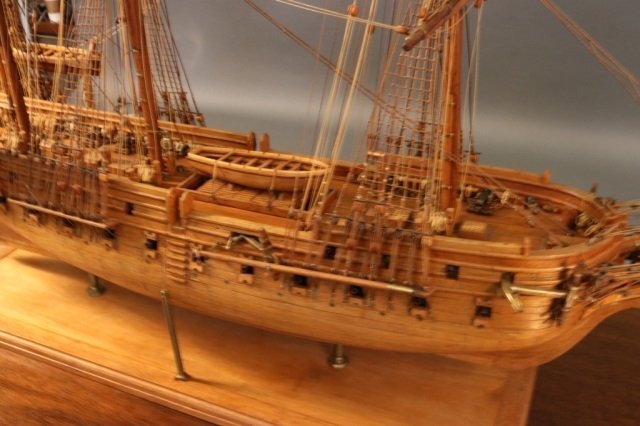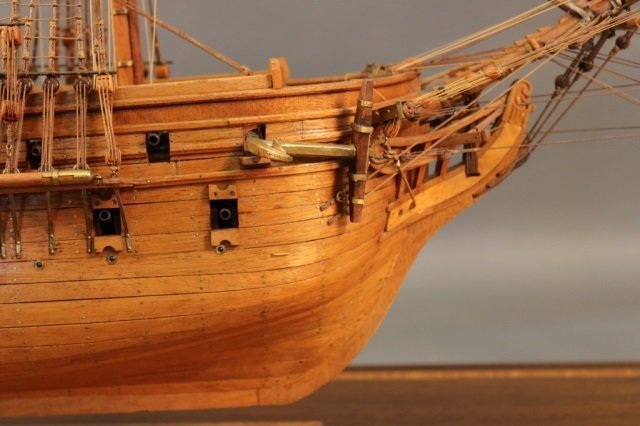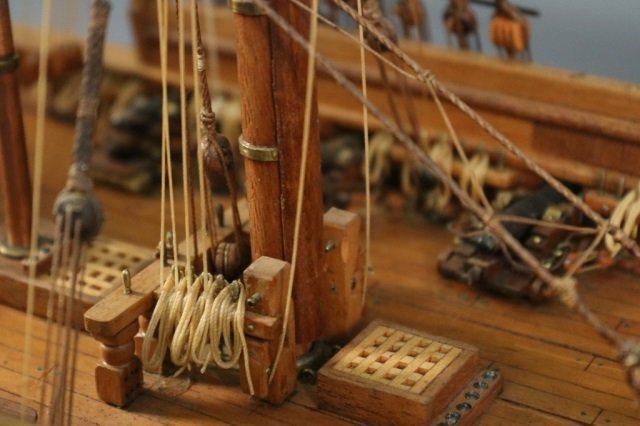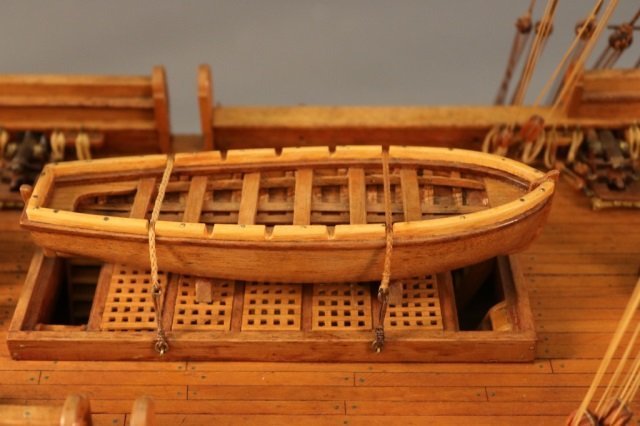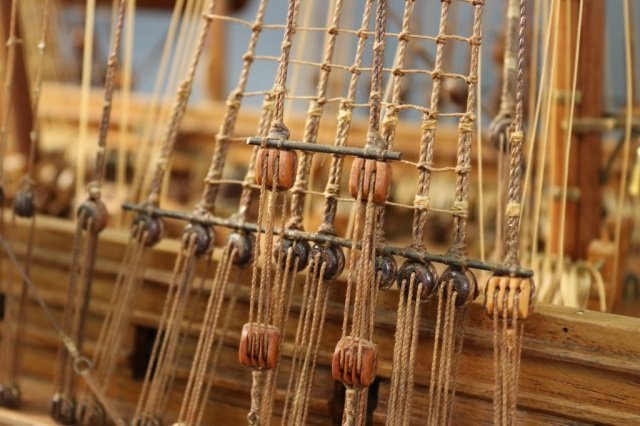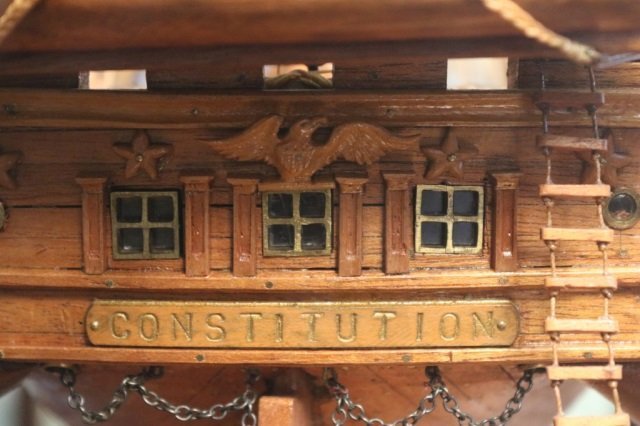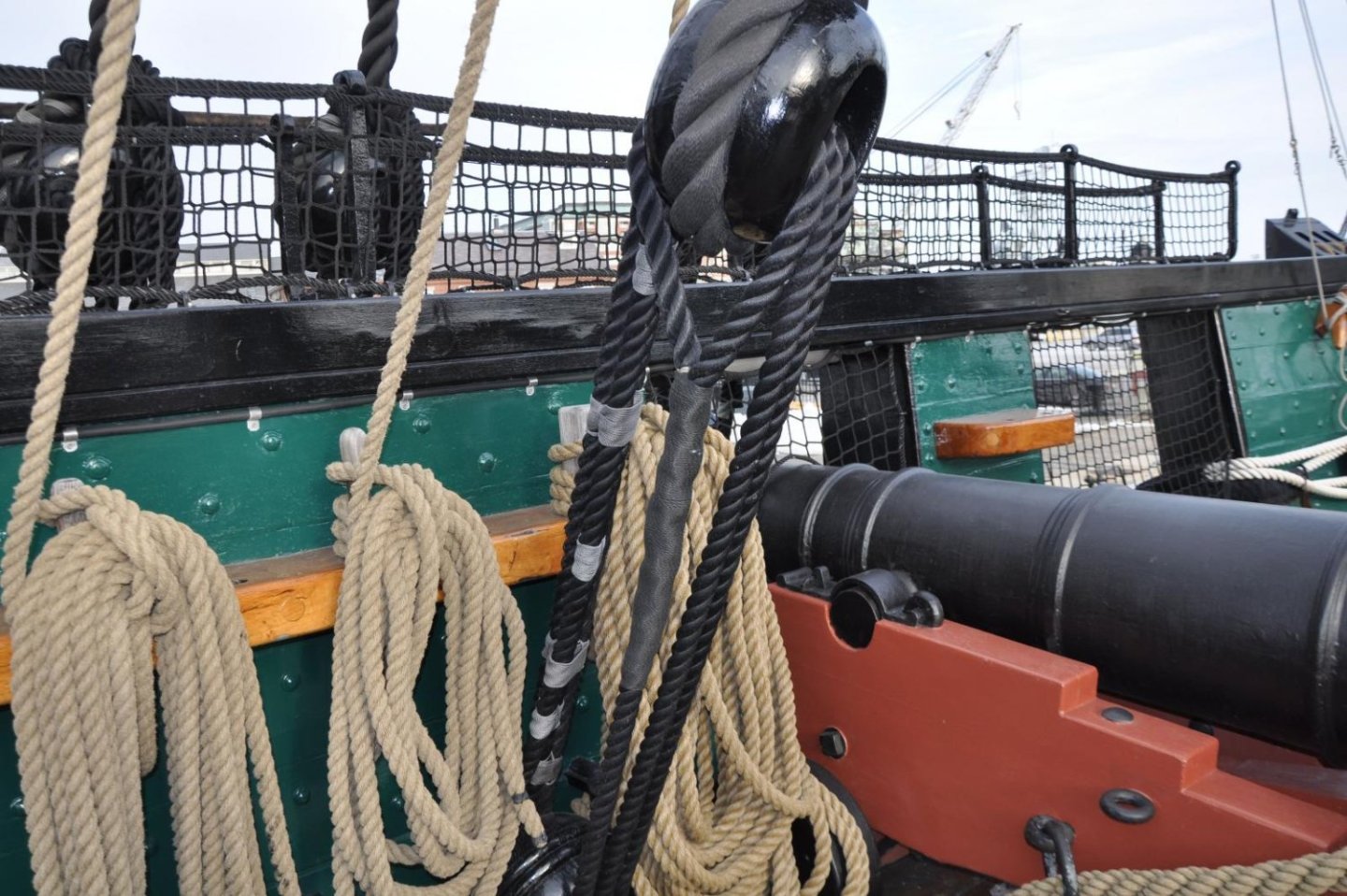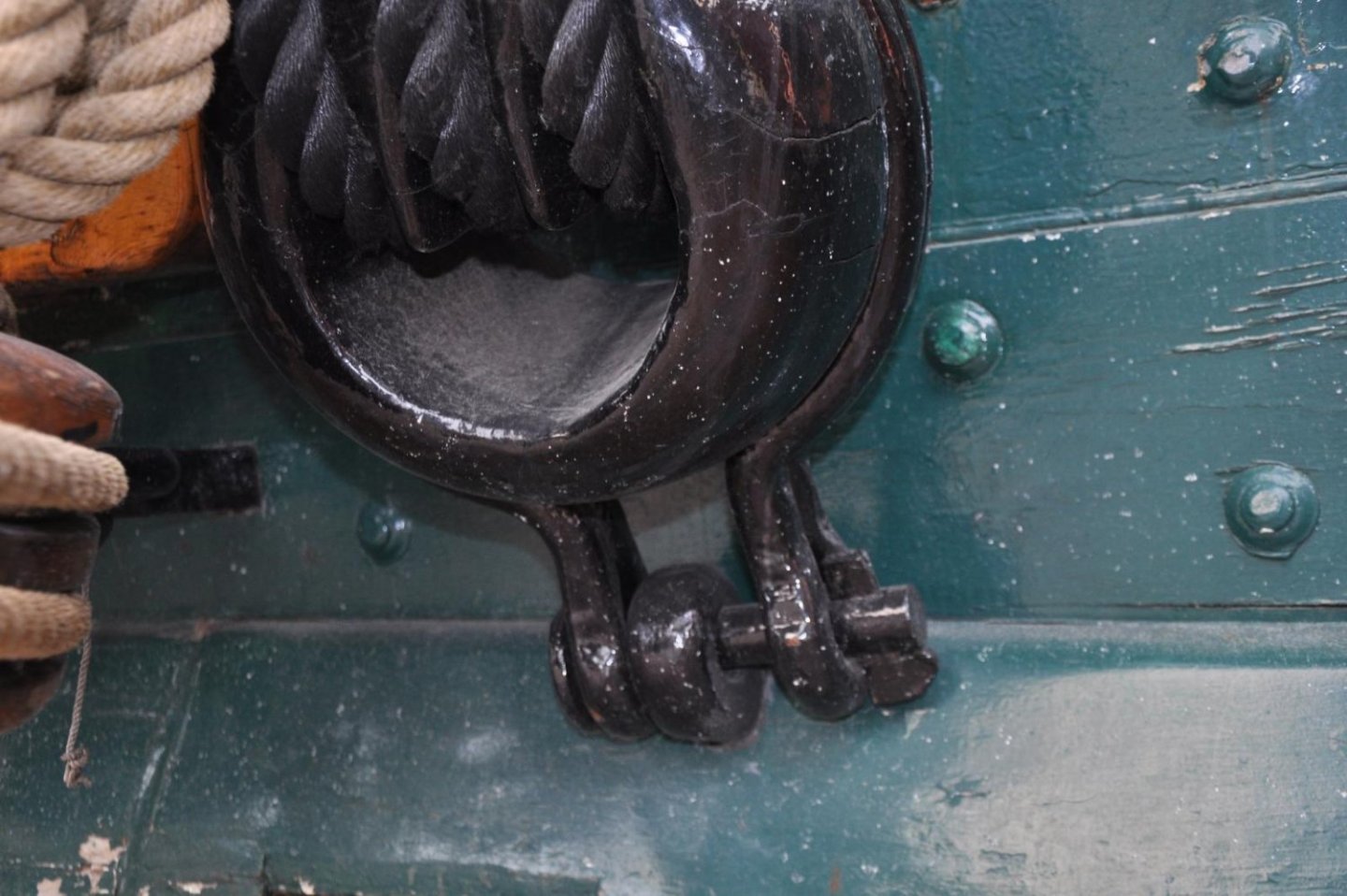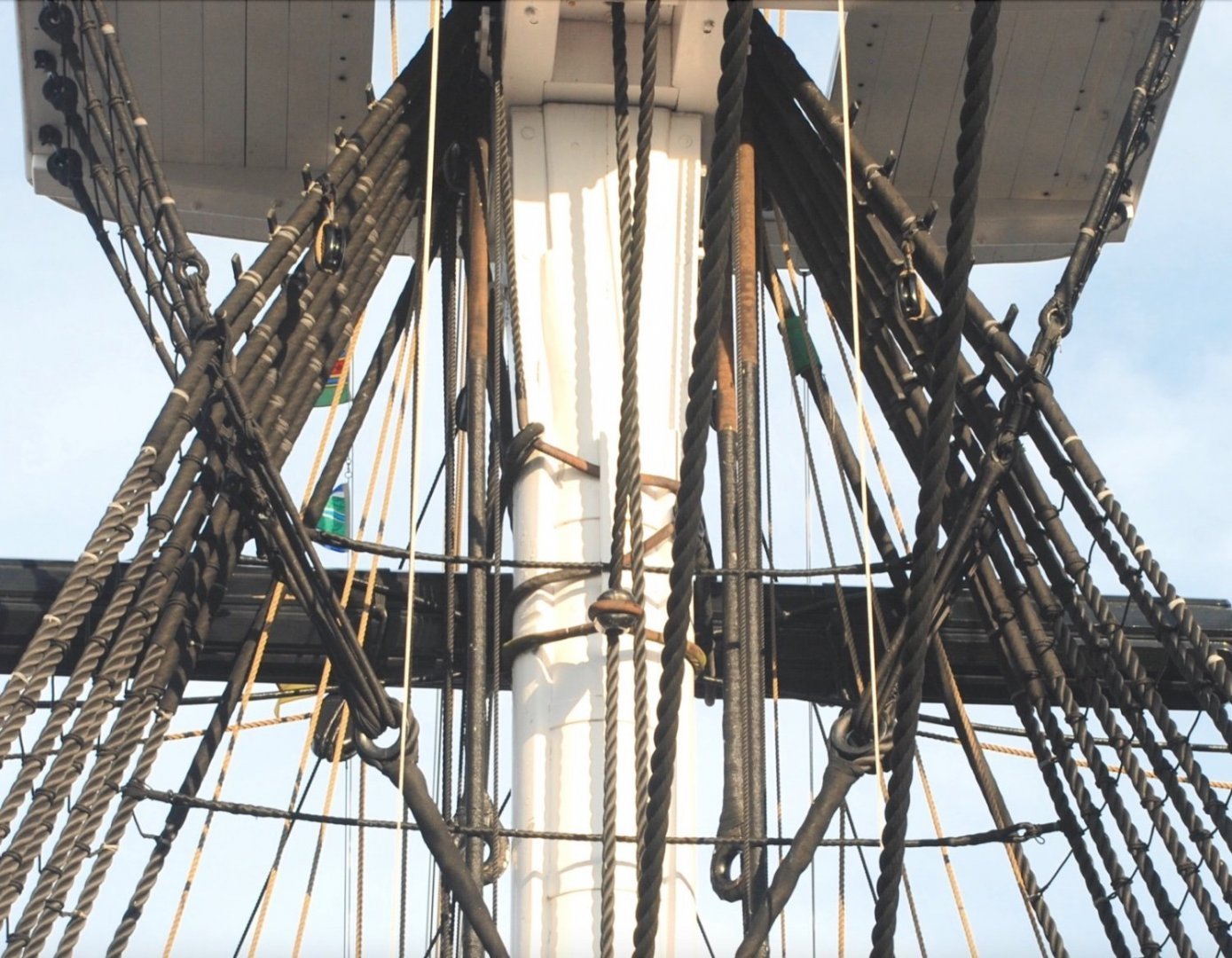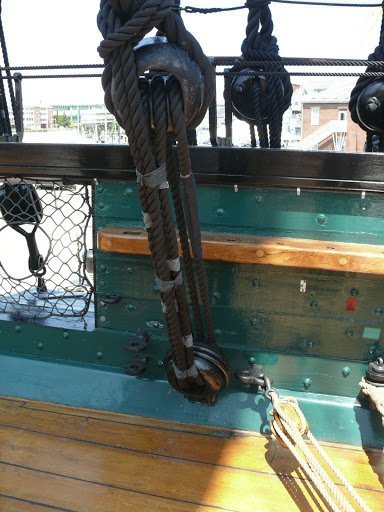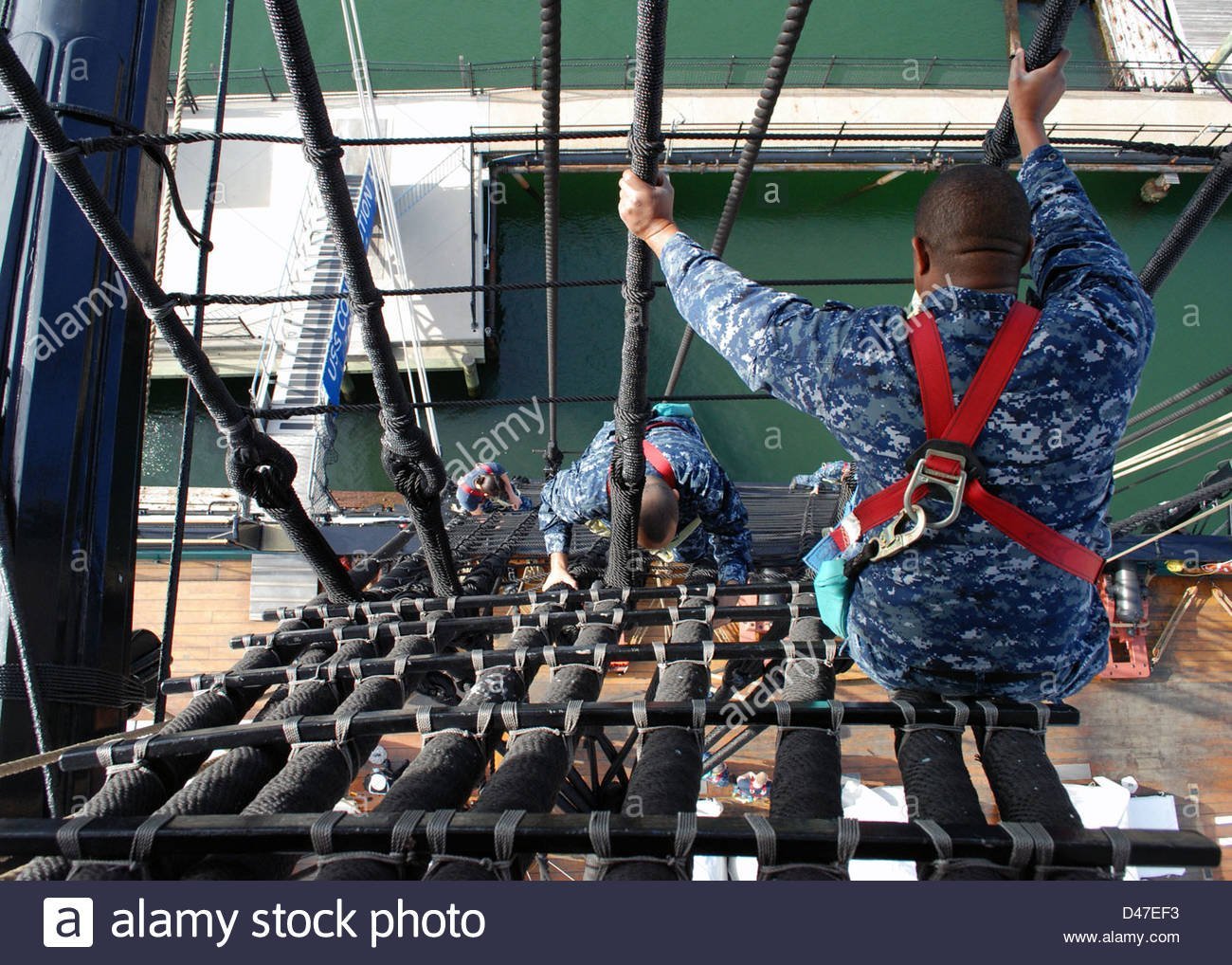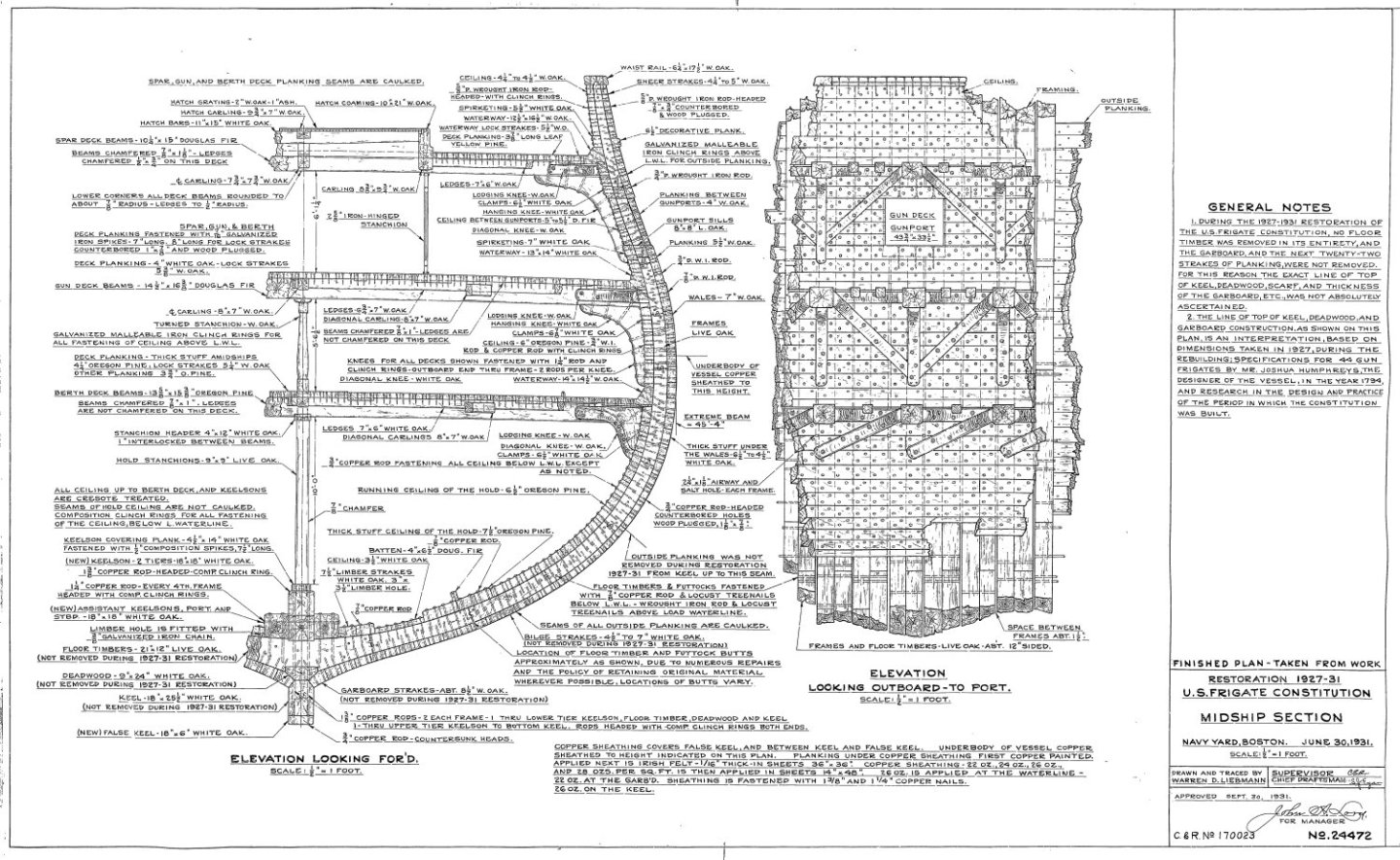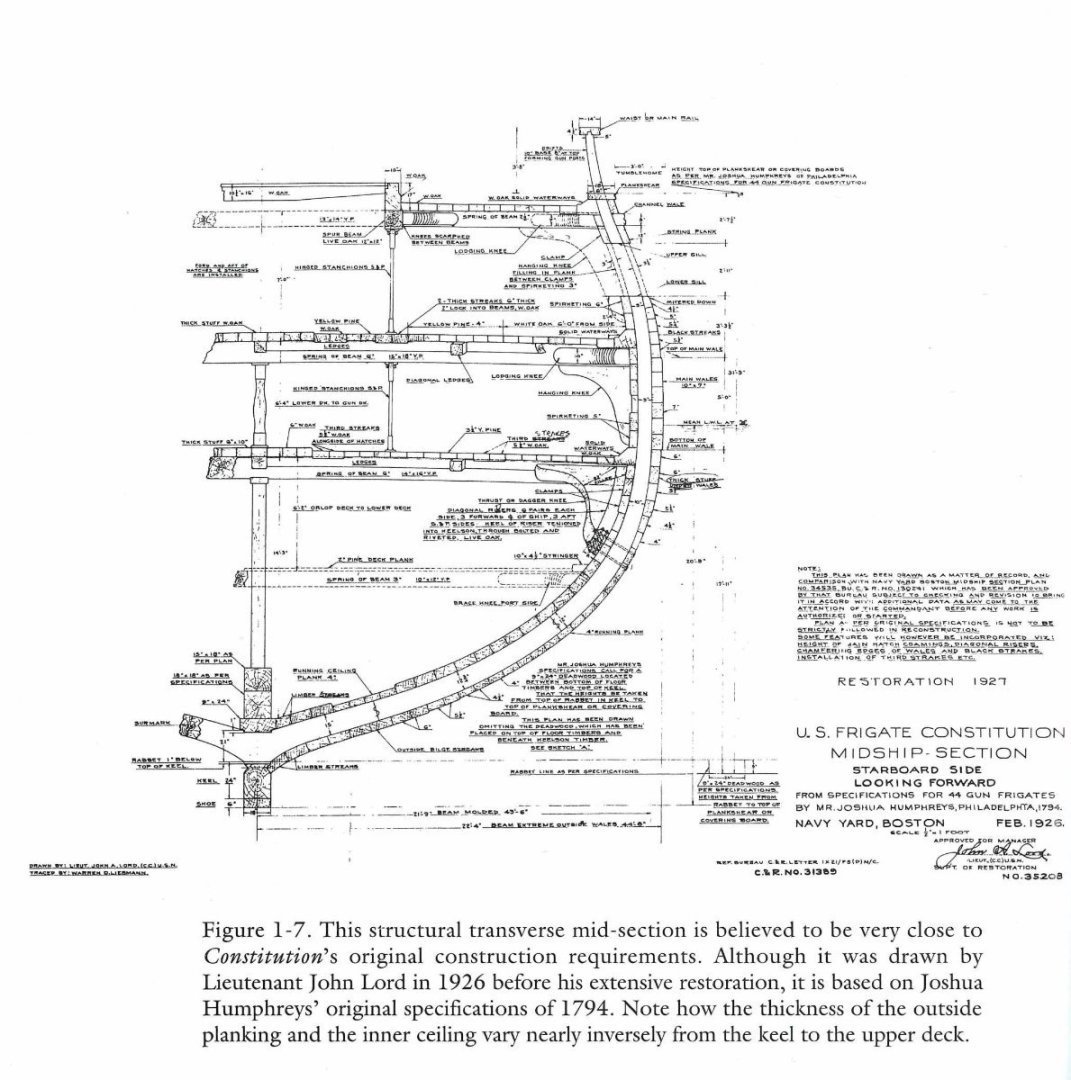-
Posts
2,606 -
Joined
-
Last visited
Content Type
Profiles
Forums
Gallery
Events
Everything posted by JSGerson
-
Finally, using the US Navy plan No. 022-06-2011 - Diagonal Rider & Knee Layout Revised 2011 (a minor revision of 27772, 1996) for the elevation view and No, 17636 Spar Deck Planking Removed 1926 for the plan view, I fabricated and added diagonal knees to the bulwarks around the gun ports of the rigged guns. Additionally, the three vertical stanchions around the stove were also fabricated from 0.032” music wire (for rigidity) and installed. Before I can move aft to the next section and while the gun deck is still accessible, I want to create spare deck structure to ensure the foremast will have a 3° rake when it is installed. As I have it presently planned, this portion of the spar deck is expected to be planked.IMG_1479.HEIC
-
Moving aft, the gun rigs and recoil lines for three sets of guns after the dummy guns had to be fabricated. The three gun sets of fully rigged guns were glued into position with their recoil ropes secured to the bulwark with a small nail through two eyebolts. I initially planned to trim the nails so that they would be shorter and have a blunt end to more closely resemble the actual pin. This proved to be very difficult to use when attempting to thread them through the eyebolts and looped recoil rope. I just used the plain nail utilizing the pointed end to facilitate the installation to the bulwark. You would need a sharp eye to notice any difference.
-
You did an excellent job and you should feel proud of your workmanship. Just so you don't feel too bad, Ken Forman (xKen) is a professional model maker so he sets a pretty high bar to match. He designed the Model Shipways cross section kit of the USS Constitution, the Model Trailways Allerton Steam Fire Pumper, and written books on making brass models. So yeah, you did a fine job. Jon
-

USS Constitution by mtbediz - 1:76
JSGerson replied to mtbediz's topic in - Build logs for subjects built 1751 - 1800
I think you hit the color perfectly. Nice job! Jon -
DAR - Because the hull is going to be painted, I think I have a simple solution. On the subsequent strakes, increase the width a bit of a couple of planks in that area until the 'waviness" disappears. Add a little wood filler if needed and the smooth it out so the wood strakes blend and you can't see any creases. The paint will cover any evidence of the unevenness and it will disappear. Hope this helps. Jon
-

USS Constitution by mtbediz - 1:76
JSGerson replied to mtbediz's topic in - Build logs for subjects built 1751 - 1800
Just so you know for comparison, The MS kit provides 37mm long guns and 23mm carronades. How accurate they are to the actual guns at scale, I don't know. Speaking of guns, the actual ship does not have her original guns but replicas mostly installed in 1927. By 1897 on her 100th birthday, she no longer carried any guns. The carronades that most likely represented the ones used in the War of 1812 (an 1808 design) are the ones with a screw adjustment for raising and lowering the barrel. These replicas were installed in 1981. The ones using a wedge for that purpose are of the 1840 era and are more technically called gunnades. As I understand it, the idea is to eventually replace the gunnades with the more accurate carronades sometime in the future. Just thought you might want to know, Jon. -
This is in essence how I planked my hull. A lot of “How to” articles and build logs use the tick mark method and proportional wheels or dividers. I just could not draw a pencil line on the hull that precise and get a strake to properly taper and fit. Like you I mathematically determined the width of the strake at every bulkhead point and sanded away, checking with the micrometer. I just didn’t do it with a nice spreadsheet. I worked each strake, one at a time, marked the determined widths on a piece of scrap paper. Once done, I discarded the paper. You did a fine job. Jon
-

USS Constitution by mtbediz - 1:76
JSGerson replied to mtbediz's topic in - Build logs for subjects built 1751 - 1800
I did a similar method only I didn't have a mill cutter lying around, so I used my Byrnes Saw. You made that process look so easy. neat, and clean. Well done! Out of curiosity, where did you get your brass cannon barrels from and what size did you get? Jon -
g8rfan - Actually, I have looked at HO figures, but I've never transformed a human figure's clothing/look into something that reasonably looked like someone else. I don't have that artistic talent; but it's not out of the realm of possibilities yet. I've got a long way to go before I'll could use them, so I still have time to consider other possible solutions. Thanks though, for the suggestion.
-

USS Constitution by mtbediz - 1:76
JSGerson replied to mtbediz's topic in - Build logs for subjects built 1751 - 1800
DAR, we may be both correct. I checked the US Navy plans and the wale does exist but is not as pronounced on the surface of the hull as the MS plans make it out to be. At best, the wale bumps out at its thickest point about 3.5" from the hull or about 3/64 at scale." and even that change is not as abrupt as the MS plans show. To see that fine detail in very old images is unlikely.
About us
Modelshipworld - Advancing Ship Modeling through Research
SSL Secured
Your security is important for us so this Website is SSL-Secured
NRG Mailing Address
Nautical Research Guild
237 South Lincoln Street
Westmont IL, 60559-1917
Model Ship World ® and the MSW logo are Registered Trademarks, and belong to the Nautical Research Guild (United States Patent and Trademark Office: No. 6,929,264 & No. 6,929,274, registered Dec. 20, 2022)
Helpful Links
About the NRG
If you enjoy building ship models that are historically accurate as well as beautiful, then The Nautical Research Guild (NRG) is just right for you.
The Guild is a non-profit educational organization whose mission is to “Advance Ship Modeling Through Research”. We provide support to our members in their efforts to raise the quality of their model ships.
The Nautical Research Guild has published our world-renowned quarterly magazine, The Nautical Research Journal, since 1955. The pages of the Journal are full of articles by accomplished ship modelers who show you how they create those exquisite details on their models, and by maritime historians who show you the correct details to build. The Journal is available in both print and digital editions. Go to the NRG web site (www.thenrg.org) to download a complimentary digital copy of the Journal. The NRG also publishes plan sets, books and compilations of back issues of the Journal and the former Ships in Scale and Model Ship Builder magazines.







